Last Updated on 6 years by Christopher G Mendla
One of the most critical aspects of sealing your driveway is to get it as clean as possible. This will require a pressure washer and cleaners as well as patience and time.
See below for links to the previous posts on this topic
The sealer and crack filler will bond a lot better to a clean driveway. Crack filling and sealing is a LOT of work so don’t shortcut the cleaning.
Driveway cleaner is sold that will attach to your hose. In my case, that simply would not have worked. One side of my driveway is lined with Hemlock Trees. The other side is lined with Norway Maples. I should say “was lined with Norway Maples” I am in the process of getting rid of those obnoxious overgrown weeds.
The sap from the trees plus runoff from the adjacent grass leaves a lot of ground in dirt that is, to an extent, glued in.
Power Washer
I didn’t get any pricing for someone to come in and power wash the driveway. In hindsight, that probably would have been a good idea. I purchased a Ryobi 1600 electric washer for just under $100 at Home Depot. That comes with about a 15′ ground fault protected power cord and a 25′ high pressure hose.
With 17′ of driveway, that simply won’t cut it. If you use extension cords for a tool such as a pressure washer, you will burn it out quickly as the voltage drops with the length of the cord. You can use an online voltage calculator to determine the actual loss. The pressure washer draws 13 amps. Assuming you have 150′ of 12 gauge extension cord, you will lose over 5 percent of the voltage.
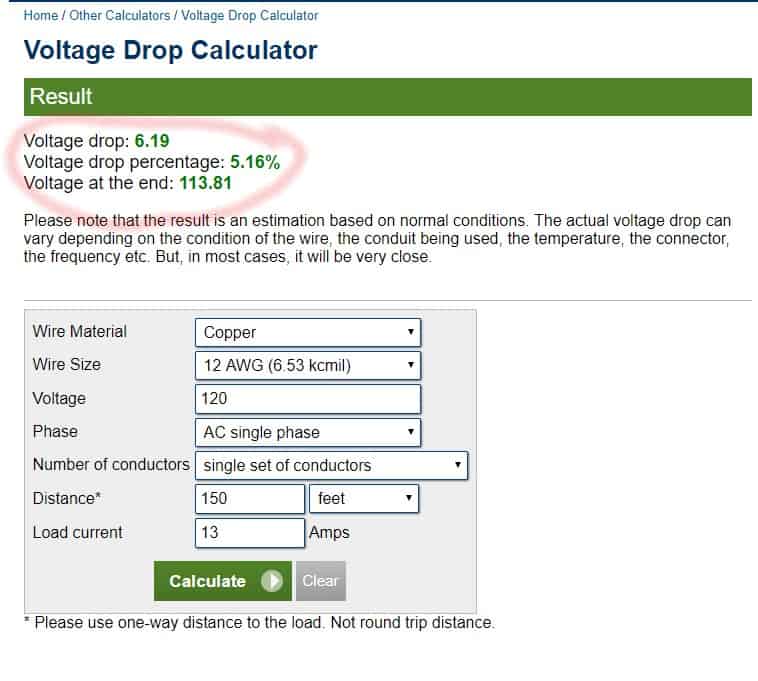
To avoid this voltage drop, you can add high pressure hose. This is NOT a cheap solution. Each 50′ section with the coupling fitting, cost about $40. That is $120 for an additional 150′ of high pressure hose. One could argue that it would be as cost efficient to simply burn out the pressure washer. My thought was that I would have to use the washer on the driveway again so I opted for the hose.
The other issue is that the hose that comes with the Ryobi, in my opinion, isn’t the greatest. I’d rather use one of the 50′ hoses that I purchased.
Do some research. Most, but not all, hose connections are standard. Make sure you get the correct hoses and couplings. For each section, you will need a hose and a coupling.
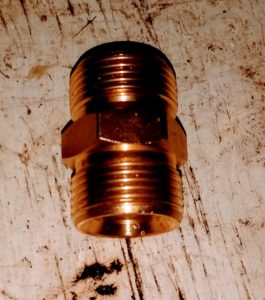
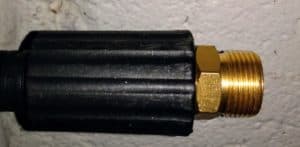
Driveway cleaning technique
Cleaning a driveway with a lot of ground in dirt and tree sap is tedious at best. I used the abrasive nozzle and held it very close to the driveway. In addition, I used pressure washing driveway cleaner. That is a little expensive so I went with Spic and Span with a bristle brush. I applied the Spic and Span with a bucket and brush, not the detergent injection on the pressure washer. Detergent will definitely help.
I also found that going at an angle helps to push the dirt away from what you have already done.
A wider spray (25 degree) nozzle helps get the soap off the driveway.
Take a close look when it dries. If you didn’t get all the dirt off it will be obvious. In that case, you need to decide if it is ‘close enough for government work’.
The image below doesn’t show things as clearly as I would like but you can see that the cleaning didn’t get all of the dirt. At some point I figured I could either do a Suzy Homemaker cleaning or try to get the job done before the first snowfall. The right side has been freshly coated with sealer.
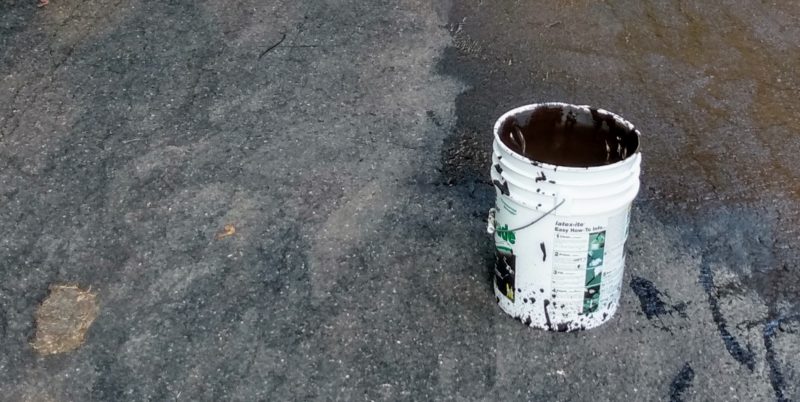
You will need to leave some time after washing the section before you start applying crack filler to ensure that there is not water remaining in the cracks.
Torch
If there is vegetation growing in any of the cracks, a torch can be handy. It will incinerate any vegetation you hit with it. It can also incinerate your house, car, garage, tractor or bystanders if you aren’t careful.
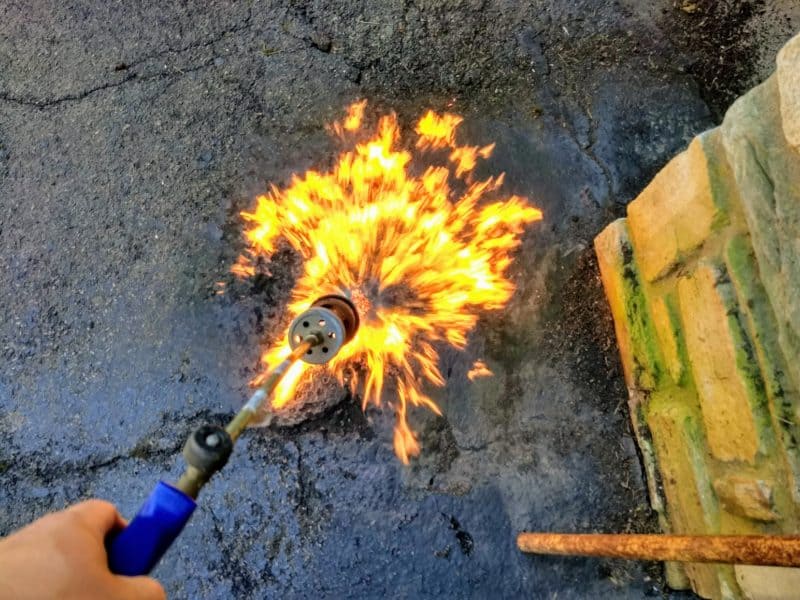
I opted to do a section at a time. You could do the whole drive at once. It will depend on your individual needs and preferences.
- Feasibility
- Previous: Materials Needed
- This Post: Cleaning the driveway
- Next: Patching cracks and potholes.
- Sealing
- Sealing in cooler weather
